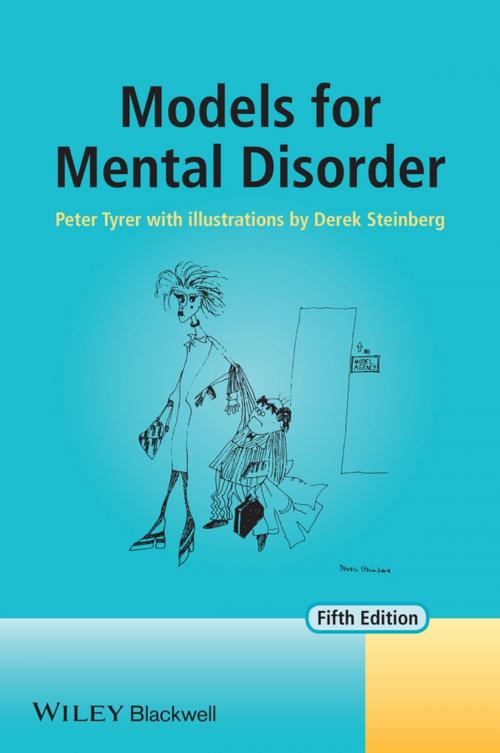| Author: | Peter Tyrer | ISBN: | 9781118540497 |
| Publisher: | Wiley | Publication: | July 23, 2013 |
| Imprint: | Wiley-Blackwell | Language: | English |
| Author: | Peter Tyrer |
| ISBN: | 9781118540497 |
| Publisher: | Wiley |
| Publication: | July 23, 2013 |
| Imprint: | Wiley-Blackwell |
| Language: | English |
Models for Mental Disorder, first published in 1987, anticipated the
move towards integration of psychiatric services into multidisciplinary teams
(doctor, psychologist, nurse, social worker, etc) and the need to bring together
the different philosophies of mental illness. Peter Tyrer has identified four
different models of mental disorder that are relevant to clinical practice:
the disease, psychodynamic, cognitive-behavioural and social models.
Each model is described and reviewed, with reference to case studies and
illustrations, to show how it relates to mental health disorders and can be
used to interpret and manage these disorders.
The book has been widely read and is often used for training purposes so that
each professional can understand and appreciate that differences in viewpoint
are often a consequence of one or more models being used in a different way
rather than a fundamental schism in approach.
Since the fourth edition was published in 2005, the disciplines of mental health
have moved even closer together with the growth of assertive outreach and
more integrated community teams. This, combined with the greater awareness
of mental health among users of services, which leads to more penetrating and
informed questions at interviews with professionals, has emphasized the need
for a wider understanding of these models.
• The only book to describe the models framing mental health diagnosis
and management
• A great review for those wanting a better grasp of psychiatric disorders
and for integration of concepts for treatment planning
• New information on formal classifi cations of mental disorder
• New information on mindfulness and mentalization regarding
the dynamic model
• Clearly written in a style which includes some humour and a
conversational presentation – a joy to read for the beginner and more
experienced practitioner alike
• Features a teaching exercise for use when training students in the
various models
Models for Mental Disorder, first published in 1987, anticipated the
move towards integration of psychiatric services into multidisciplinary teams
(doctor, psychologist, nurse, social worker, etc) and the need to bring together
the different philosophies of mental illness. Peter Tyrer has identified four
different models of mental disorder that are relevant to clinical practice:
the disease, psychodynamic, cognitive-behavioural and social models.
Each model is described and reviewed, with reference to case studies and
illustrations, to show how it relates to mental health disorders and can be
used to interpret and manage these disorders.
The book has been widely read and is often used for training purposes so that
each professional can understand and appreciate that differences in viewpoint
are often a consequence of one or more models being used in a different way
rather than a fundamental schism in approach.
Since the fourth edition was published in 2005, the disciplines of mental health
have moved even closer together with the growth of assertive outreach and
more integrated community teams. This, combined with the greater awareness
of mental health among users of services, which leads to more penetrating and
informed questions at interviews with professionals, has emphasized the need
for a wider understanding of these models.
• The only book to describe the models framing mental health diagnosis
and management
• A great review for those wanting a better grasp of psychiatric disorders
and for integration of concepts for treatment planning
• New information on formal classifi cations of mental disorder
• New information on mindfulness and mentalization regarding
the dynamic model
• Clearly written in a style which includes some humour and a
conversational presentation – a joy to read for the beginner and more
experienced practitioner alike
• Features a teaching exercise for use when training students in the
various models















